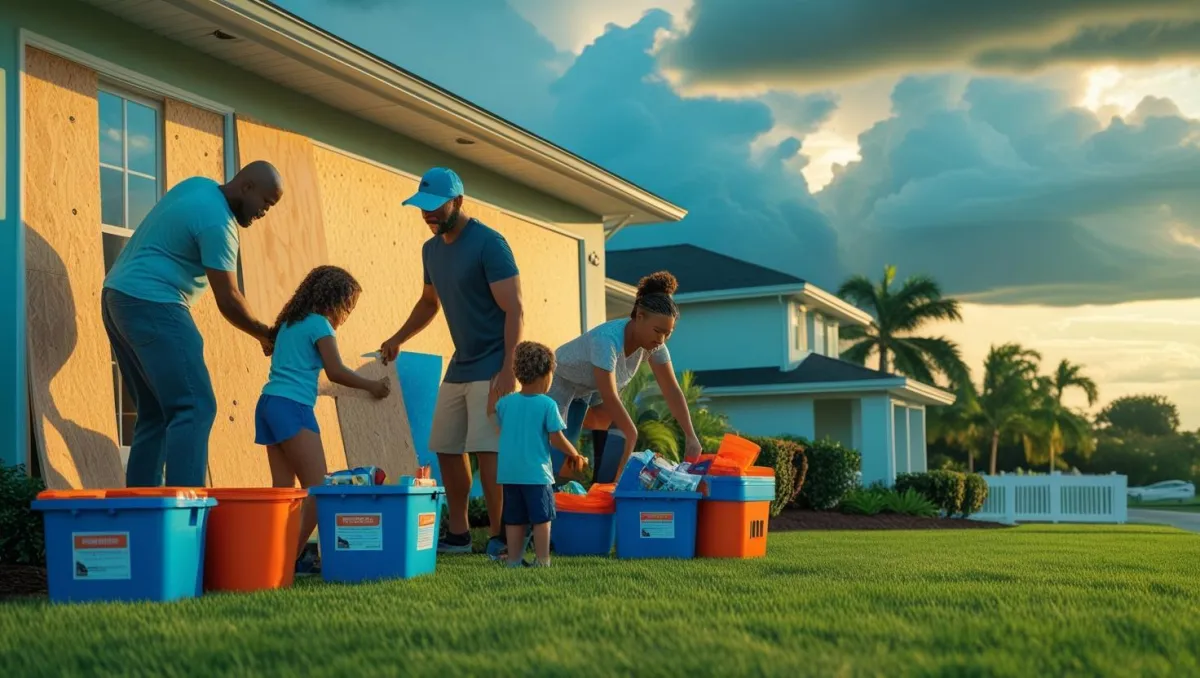
Prepare Your Investment Properties for Hurricane Season
How to Prepare Your Investment Properties for the 2025 Hurricane Season
Protect Your Rental Assets with This Essential Storm-Readiness Guide
If you're a real estate investor or property manager with assets in hurricane-prone areas, preparing your investment properties for hurricane season is not just good practice—it's essential. From safeguarding your tenants to protecting your property value, proactive preparation can save thousands of dollars in damage and liability.
Hurricane season officially runs from June 1 through November 30, and storms are becoming more frequent and intense. This guide will walk you through a complete checklist to protect your real estate rental property, minimize risk, and keep your income streams intact.
Hurricane Preparation Matters for Real Estate Investors
Whether you own single-family homes, duplexes, or multifamily rentals, hurricanes can threaten everything you’ve worked to build. A lack of preparation can lead to:
Expensive repairs
Insurance claim denials
Tenant displacement
Long-term vacancies
Loss of rental income
If you’re involved in real estate investing, especially in coastal regions, storm readiness should be part of your regular property management plan.
🛠️ 1. Inspect and Reinforce the Property Exterior
Start by evaluating your investment property’s exterior for vulnerabilities.
Roof
Check for missing or damaged shingles
Seal flashing and edges
Ensure gutters are clear and securely fastened
Windows and Doors
Install storm shutters or impact-resistant windows
Reinforce garage doors
Replace weather stripping
Landscaping
Trim trees and remove dead branches
Secure outdoor furniture or decorative items
Clear drainage areas to prevent flooding
These simple but crucial steps can prevent damage from high winds and flying debris.
⚡ 2. Protect Utilities and Critical Systems
A major storm can knock out power and damage systems that are expensive to replace.
Electrical
Elevate circuit breakers, sockets, and wiring if the property is in a flood zone
Install surge protectors on HVAC and major appliances
HVAC
Secure external AC units to the ground or a concrete pad
Cover units with hurricane-rated covers (but only if manufacturer-approved)
Water & Gas
Know how to shut off water and gas lines
Inspect sump pumps and backup battery systems
If you manage multiple real estate rental properties, create a master utility map for easy access during emergencies.
🧑💼 3. Communicate with Tenants
Keeping your tenants safe should be a top priority—and clear communication can prevent panic and confusion.
Send out a hurricane preparation guide 1–2 months before hurricane season
Include evacuation routes, emergency contacts, and shelter locations
Remind them to store valuables, stock supplies, and secure loose items
Clarify responsibilities—what you will do versus what they should do
If you use a property management platform, use bulk SMS or email tools to keep tenants updated before, during, and after the storm.
🧾 4. Review Insurance Coverage
Your insurance policy is only useful if it covers what you need. Unfortunately, many real estate investors only discover gaps after a storm.
Key Coverage Areas to Review:
Wind and hail damage
Flood insurance (not included in standard policies)
Loss of rent or business interruption
Mold remediation
Code upgrade coverage (if local laws change after rebuilding)
Make sure policies are current and reflect your property’s value, upgrades, and additions. Also, keep digital and printed copies in a secure, accessible location.
📸 5. Document the Property Before the Storm
This is a step that many investors skip—until it’s too late.
Take clear, timestamped photos of the entire property (interior and exterior)
Include appliances, windows, roof, and any upgrades
Keep records of recent maintenance and repairs
These photos can help speed up insurance claims and protect you from disputes with tenants or adjusters.
🧰 6. Create an Emergency Response Plan
Every investment property should have a custom emergency plan based on location, property type, and tenant needs.
Your Plan Should Include:
Evacuation instructions for tenants
Contacts for emergency repairs (roofers, plumbers, electricians)
Utility shutoff instructions
Property manager or owner contact details
Post-storm inspection checklist
If you work with a property management company, ensure they have a dedicated hurricane protocol in place.
🧹 7. Prepare for the Aftermath
Once the storm passes, time is of the essence to minimize damage and restore habitability.
Check on tenants and ensure safety
Inspect the property for water intrusion, roof leaks, and structural damage
Document all damage with photos and video
Contact your insurance company and begin the claim process ASAP
Coordinate emergency repairs to prevent further damage
Also, be prepared for delays in labor and materials—many investors are in the same boat post-storm.
🧾 Bonus Tip: Keep an Emergency Budget
If you’re a seasoned real estate investor, you know that insurance doesn’t cover everything—and it rarely pays fast. Having a reserve fund for emergencies ensures you’re not waiting months to fix damage or cover vacancies.
Final Thoughts
Hurricane season is unpredictable, but your preparedness doesn’t have to be. As a real estate investor or property manager, protecting your rental assets is part of long-term success. With the right plan, communication, and systems in place, you can weather the storm—literally and financially.
Take action now, not when the storm is 48 hours away. Your tenants, your properties, and your bottom line will thank you.
